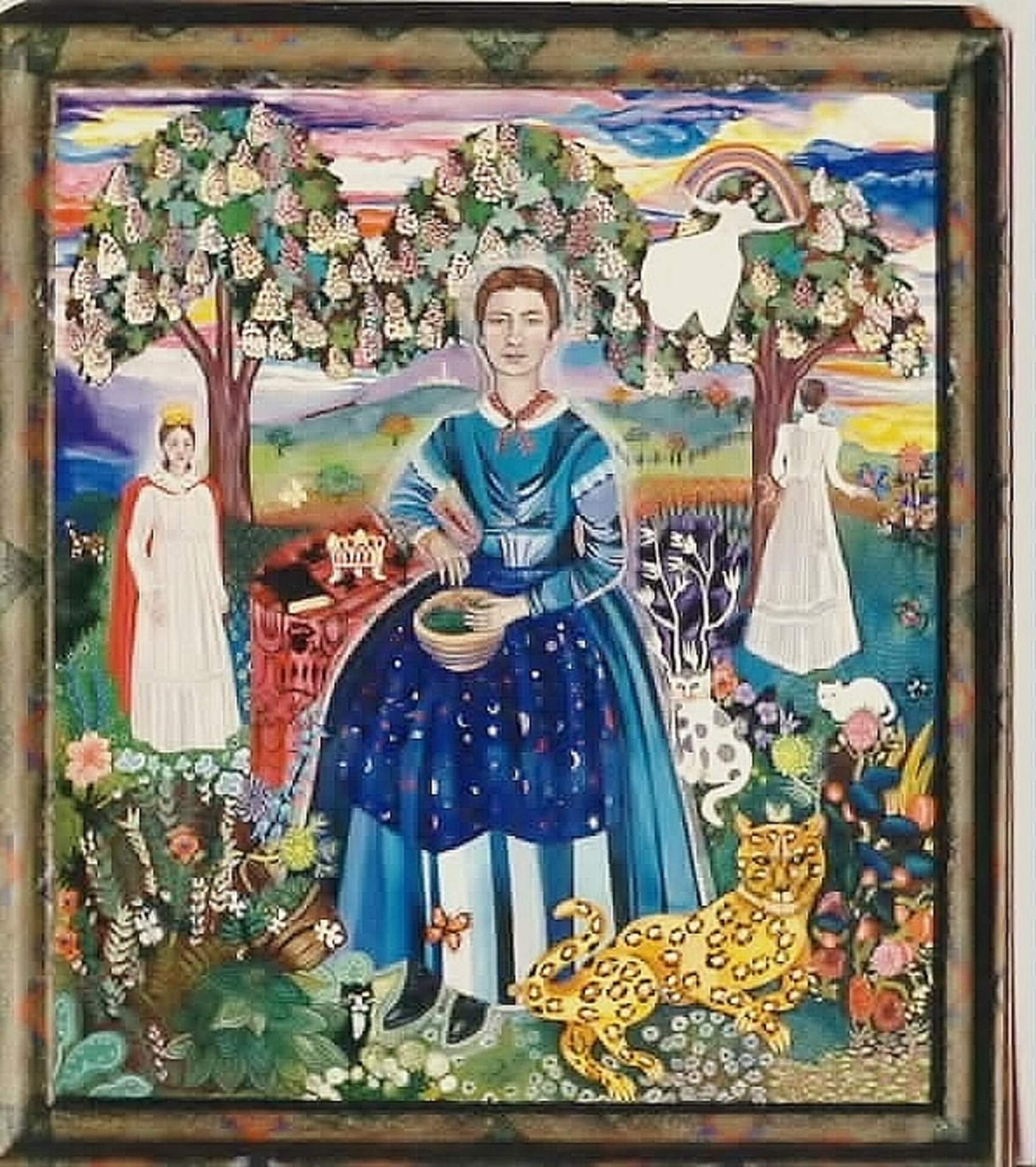Sally Cook (1932-2025)Emily Dickinson, White Garden
1986
acrylic on stretched canvas, hand-painted frame
32 x 28 inches
Collection of Teresa Dabrowski
"In this large painting, rather than thinking of one particular poem, I have referred in general to some of the symbols and attitudes that Emily Dickinson used in her poetry. Starting with the three background trees, they are symbolic of Emily, her sister and her brother. Their interrelationships influenced her work in so many ways, both positive and negative. Some of her earliest poems were written as letters to her brother, away at college.
I have depicted four different Emilys here. Most of them wear white, the color she chose. Scholars like to argue and quibble over the meaning of this choice, as white means many things to many people. But I think that, being a New Englander descended from Puritans, her choice simply meant purity, and from that, the sort of ghostly self-enclosed presence she took on when she failed at normal life, which enabled her to endure. I say endure because an early Emily loved parties, fashion, and men. This is illustrated in the central figure. There, she is in her garden, shucking rough pea pods, as if cleaning up everyday words; to reveal the lovely, glistening, evenly rounded syllables from her poems, represented by peas.
In that age of rudimentary medicine and awkward travel, some of her male “friends” died early on of things that could be easily cured today, others moved away for adventure or to take better jobs, consequently meeting and marrying other people. Later, her failed liaisons with married men and others such as the unnamed “Master”, to whom she wrote some pathetic love letters, caused her to turn inward; to re-evaluate her worth.
Because of the poetry, which everyone, including past and future lovers admired, she began to think of herself as a queen, and used this imagery in her poems. The figure on the extreme left illustrates that view of herself.
The next small figure represents her imagination. Here, she is up in the sky, flying and trying to capture a rainbow. Emily truly loved color -- especially in nature. We share that. The last and fourth Emily is looking out over Amherst, probably wondering what conspired to keep her in the town. This is the contemplative Emily.
The leopard at her feet is from one of her poems; the white Indian Pipe next to her left elbow is said to have been her favorite plant.
Some authors and researchers say she hated cats; others that she loved them. Just in case, I scattered a few throughout the painting, which is meant to be a representation of her life, her psyche, and the poems that resulted.
Emily Dickinson is a perfect example of, as they say, making lemonade from lemons -- the richest of inner lives contained in a shell of the constrained mundane."
-Sally Cook
